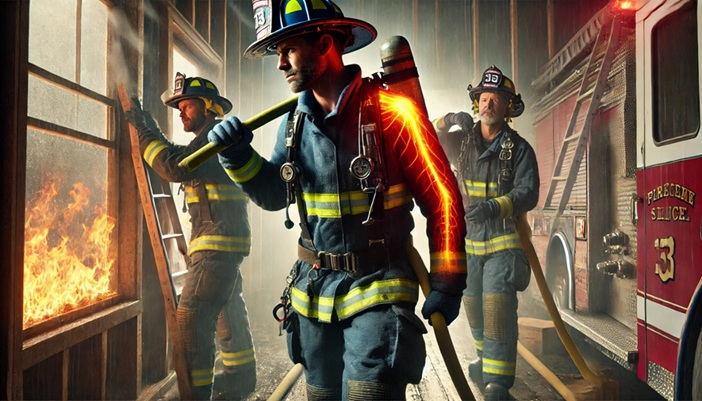
What is the problem?
Firefighters face unique physical demands in their work that expose them to a high risk of bone and joint injuries, especially shoulder injuries. These injuries can impair their ability to carry out job duties and everyday activities, leading to disability.
How did the team study the problem?
We interviewed twelve firefighters (8 males, 4 females) from Canada (n=6) and the United States (n=6) about their experiences with injuring their shoulder at work. We used a special research method to carefully analyze the firefighters’ perspectives and identify important patterns and themes related to the causes and risk factors of work-related shoulder injuries.
What did the team find?
Our research showed that personal factors, such as age and physical conditioning, combined with occupational demands, significantly contribute to shoulder injuries in firefighters. Younger firefighters often injure their shoulders due to overexertion during physically demanding tasks like carrying fire hoses or using heavy tools. In contrast, older firefighters commonly reported injuries caused by the cumulative wear and tear of repetitive movements, such as operating overhead equipment, over many years of service. Firefighters felt that having too much or too little shoulder exercise are major risks for shoulder tears, sprains, or strains. Likewise, firefighters working in understaffed departments reported facing additional risks of shoulder injuries by enduring longer shifts with less rest and without adequate recovery. They believed that the primary causes of shoulder injuries were unpredictable environmental hazards leading to traumatic injuries (e.g., falls), the physical strain of wearing and using heavy equipment in awkward positions, and doing the same movements repeatedly. Pain and reduced shoulder mobility resulting from these injuries were stated to make job tasks and daily activities more challenging, emphasizing the complex interaction of how high physical demands, workplace conditions, and individual behaviors contribute to shoulder injuries among firefighters.
How can this research be used?
The research showed that preventing shoulder injuries in firefighters requires looking at different factors and making changes in how they work, train, and take care of themselves. The findings can help fire departments create comprehensive prevention and management programs to improve exercise routines, equipment ergonomics, and staffing levels. The insights can be used by fire departments to implement more effective health and safety protocols and by healthcare providers to develop targeted treatment and rehabilitation strategies for injured firefighters. The complex interplay of personal and occupational factors means that interventions must be personalized and adaptable to different contexts and individual needs.
Cautions
While the findings provide valuable insights, they are based on self-reported data from a small sample, which may not represent all firefighters. The researchers didn’t watch firefighters at work or look at medical records, relying only on what the firefighters told them.
Reference: Osifeso TA, MacDermid JC, Berinyuy DA, Parikh P, Faber K. “Missing Mobility”: Perspectives of North American Firefighters on the Risks and Causes of Work-Related Shoulder Disorders: A Qualitative Study. J Occup Rehabil (2025).
Funding Sources: This research was funded by Canadian Institute of Health Research (CIHR): 202211FBD-493857-92798.
Acknowledgments: This summary was developed with AI language and image support and reviewed by content experts and firefighter collaborators.
